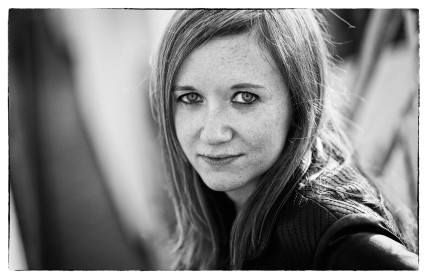 That ‘what if’ feeling… it’s a stranger to nobody, least of all to Eva, Laura Barnett’s enduring protagonist of upcoming novel, The Versions of Us.
That ‘what if’ feeling… it’s a stranger to nobody, least of all to Eva, Laura Barnett’s enduring protagonist of upcoming novel, The Versions of Us.
Having already been compared to Sliding Doors (1998) and David Nicholls’ novel, One Day (2009), The Versions of Us is not an entirely new concept, but it is incredibly readable, and Barnett’s characters jump readily off the page. A speculative tale of one woman’s life told through three possible realities, we meet Eva when she is just nineteen years old, and a student at Cambridge University, circa 1958. It is here that Eva meets Jim, a fellow Cambridge student, and the decision she makes on whether to go home with this tweed-clad, Brave New World-carrying gentleman is the initial splitting point at which Barnett introduces the three versions of Eva’s life as it is to continue. We are carried chronologically through Eva’s life, and for each event are given an account in triplicate; with each narrative portraying Eva’s life after making a different decision on that fateful day in 1958.
However, Barnett not only introduces us to three distinct versions of Eva and Jim – highlighting, of course, that it is often a seemingly small decision that decides the trajectory of our lives – but also provides more nuanced changes to the characters within each narrative, allowing for a realistic account of how life can alter a person, and how a character has its many facets. In version three of Eva and Jim’s story, Jim confides to his friend Stephen that ‘it is as if he has split himself in half: has become two people, each fully functioning in his own, separate world’. This element to a novel that otherwise relies on a wonderfully speculative form allows for this story to be more than a curious ‘what if’ experiment, and allows insight into how one person can have their many ‘versions’, even if unlike Eva and Jim, we have been written only one reality.
The admission of lives often failing to offer up consistency is also tackled by Barnett’s interaction with the idea of predetermination. Though the theory is never explicitly mentioned, there is certainly a faint air of ‘everything happens for a reason’ at certain points throughout the narrative. In the second version of events, throughout which Eva and Jim’s lives are taken in their own separate directions, only to converge fully very late in life, Jim ponders their late meeting:
He has an odd vision of the passage of both their lives as two separate tracks, now suddenly, unexpectedly veering closer. He ought to say no. It is only coffee she is proposing […] And yet surely it is also more than that. He knows it. He knew it when they met at the Algonquin; he knew it at Anton’s party and when she had stood beside him on the steps of Stephen’s gallery. Then, like now, she had lingered on the brink of a decision, and had not found in his favour. Now, perhaps she has.
There is an element, in moments like these, throughout the novel, that reek of ‘meant to be’ emotion. This is coupled with the occasional use of the future tense, suggesting that these events are predetermined. Of course, we have to take into account the narrator’s omniscience, but the pointed mentioning of future events in a book about life’s trajectory is surely a cause for mention. To read a love story where, against all odds, the protagonists end up together is slightly too twee a concept for this reader to handle, and indeed the rest of the novel is refreshingly realistic in its take on life, and the possibilities and decisions with which we are faced. Throughout the three narratives, Eva and Jim, either directly or indirectly, have to deal with divorce, unplanned pregnancy, illness, death, unrelenting in-laws and, of course, a lot of love. It is incredibly romantic to believe that love conquers all, and that there is such a thing as ‘The One’ – I am the first to admit that I will readily bawl at a beautiful love story, even the cheesy, cheesy deliciousness that is The Notebook – but it is the steadfast close-to-the-bone realism that Barnett offers as part of her love story that makes it stand out.
However, to be fair, there are rather ambivalent messages throughout about the nature of fate, and whether it does or does not exist. Jim and Eva even explicitly have a conversation on the subject, with Jim worrying about the path their lives have taken:
“I have this terrible feeling that everything from then on [Cambridge] has just been wrong, somehow, that none of it was meant to happen.”
“You don’t really believe that anything is meant to happen, do you?” Eva speaks quietly, so that only he can hear.
“No. Maybe not. Who knows?”
Jim’s eventual ‘who knows’ conclusion summarises the larger point that the novel makes on the subject of predetermination; that is, that nobody really knows, but sometimes it’s nice to imagine it’s true.
Despite a few sometimes clichéd nuances, there are various elements to The Versions of Us that remain interesting and clever. Alongside their life stories as sometime/future lovers, Eva and Jim are both artists. Eva is a writer, and Jim a painter, and it is often through their work, or their considerations of their work, that Barnett connects with the issue of reality. It is with Jim’s painting, enticingly entitled The Versions of Us, that the ability of art to present life’s variety and indecision really culminates:
“Like a Spot the Difference,” Helena had said when he first outlined the idea: she was joking, but he felt the sting. His aspirations for the triptych were much grander. The painting is about the many roads not taken, the many lives not lived.
Of course the wider form of the novel automatically affords this idea, but it is often the acknowledgement of the theme of reality through the protagonists’ art that is more engaging, especially since through art the artists themselves are creating alternate realities. The eponymous work of art that Jim creates is indeed the most obvious example, but in the first version of the ending of Jim and Eva’s story, Eva finds a drawing of herself, sketched by Jim during their early years together in Cambridge. The art is not only reminiscent for Eva, but also engenders in her a musing on her own identity: ‘[i]t is her and it is not her. A version of her. His version, or the version she once offered him.’ What Eva sees in this picture she knows to be herself, but again the word ‘version’ creeps in here, and it is viewing herself through Jim’s eyes, through his art, that really makes her realise how one person can be perceived as so many things throughout one lifetime.
It is change and possibility, then, that is largely the concern at hand here. Barnett pulls forth images of change and unknowable futures frequently throughout the narrative, whilst allowing an almost characteristic realism to stay true. In one of the second version instalments, Eva is taking a car ride with her brother, Anton, and after reminiscing about their childhood, she finds herself ‘almost not recognising him’.
In short, The Versions of Us isn’t necessarily ground-breaking in its conception, but it is beautifully written, with certain pockets of insight, and syntactically engaging prose. A moment where Jim is considering the life that lies ahead of his granddaughter does pretty well in epitomising the beauty of Barnett’s prose, and the notion that our path through life is but one, and is often determined by seemingly small changes in direction:
And so it is of Jessica that Jim thinks now, as the train carries him north, past fields, over bridges, skirting the fleeting sprawls of towns; carving its silvery path through the life he is already living, not the one that might have been.
And let’s be honest; who among us hasn’t asked ourselves at the end of a bad day, believing in fate or not… what if ?











